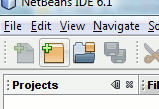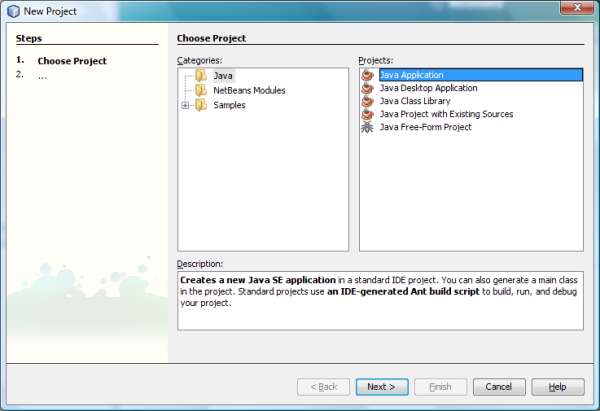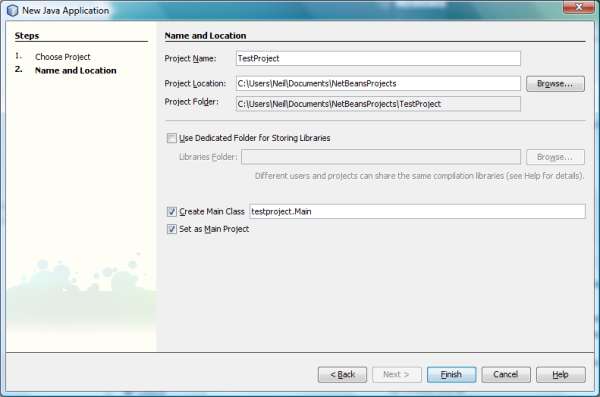Getting started with Java in NetBeans
We assume that you've obtained a JDK and IDE for your
machine: these are the things you need to get started programming Java. In this guide, we'll
assume that you're using the NetBeans IDE, which simplifies certain aspects
of getting started for absolute beginners. However, if you have chosen another IDE such as
Eclipse, it shouldn't matter terribly. Much of the principles are the same, but some of the
dialog boxes you will see in Eclipse have extra options which you can generally ignore for the
time being.
Creating your first project
When working with an IDE, you don't generally stick bits of program willy-nilly all
over your hard disk (which was definitely a possibility in the heyday of BASIC, for
example). Instead, you tell your IDE to use a particular directory to store your projects
in, and each of your projects (in effect, each application you write) has its own
directory inside that "master" directory.
|
There's generally little to say about actual installation of NetBeans (or indeed
other IDEs): it's generally a bog-standard installer depending on your platform.
When you run NetBeans for the first time, you'll be presented with a large window
divided into sections. Ignore this for now, and look for an icon in the top left
with a picture of a yellow box and a green cross. This is the New Project tool,
as illustrated to the right. On other systems, if the icon isn't obvious,
look for a New Project option in the File menu.
|

The New Project icon in NetBeans
|
Selecting the New Project button or menu option will bring
up the following dialog box. The purpose of this dialog is to select the Project Type.
Make sure that Java Application is selected on the right and click Next.

The next dialog to appear allows you to select the name and
location for your project. I suggest you create a project called
TestProject which you can use for 'playing about' with Java. (Even later
on, it's often useful to have a test project for testing ideas, or for the
occasional "throwaway" program.)

Below the project name field are two directory locations, which you may
be able to leave as their default settings:
- The Project Location directory is essentially the "master"
directory where all your Java projects will set. The default is usually OK,
although as you can see, Windows likes particularly long-winded directories.
You may prefer to change this directory to something less convoluted–
in Windows,
C:\Projects would be an excellent choice for most people. From time to time, you'll
inevitably need to browse to this place, e.g. to copy icons to your projects etc.
So having it buried in ten levels of directory structure isn't always
very convenient.
- The Project Folder can usually be left as the default:
it will be a folder with the same name as your project, inside the master
directory you specified above.
For your first project, you can leave the Create Main Class
option as it is.
Finally, click Finish. You will now be presented with
a skeleton project.
Next: adding your first line of code
If all has gone well so far, you should now have a "blank" project ready
to add your first line of Java code. On the next page, we look at
writing your first line of Java code
and running your first Java program.
If you enjoy this Java programming article, please share with friends and colleagues. Follow the author on Twitter for the latest news and rants.
Editorial page content written by Neil Coffey. Copyright © Javamex UK 2021. All rights reserved.